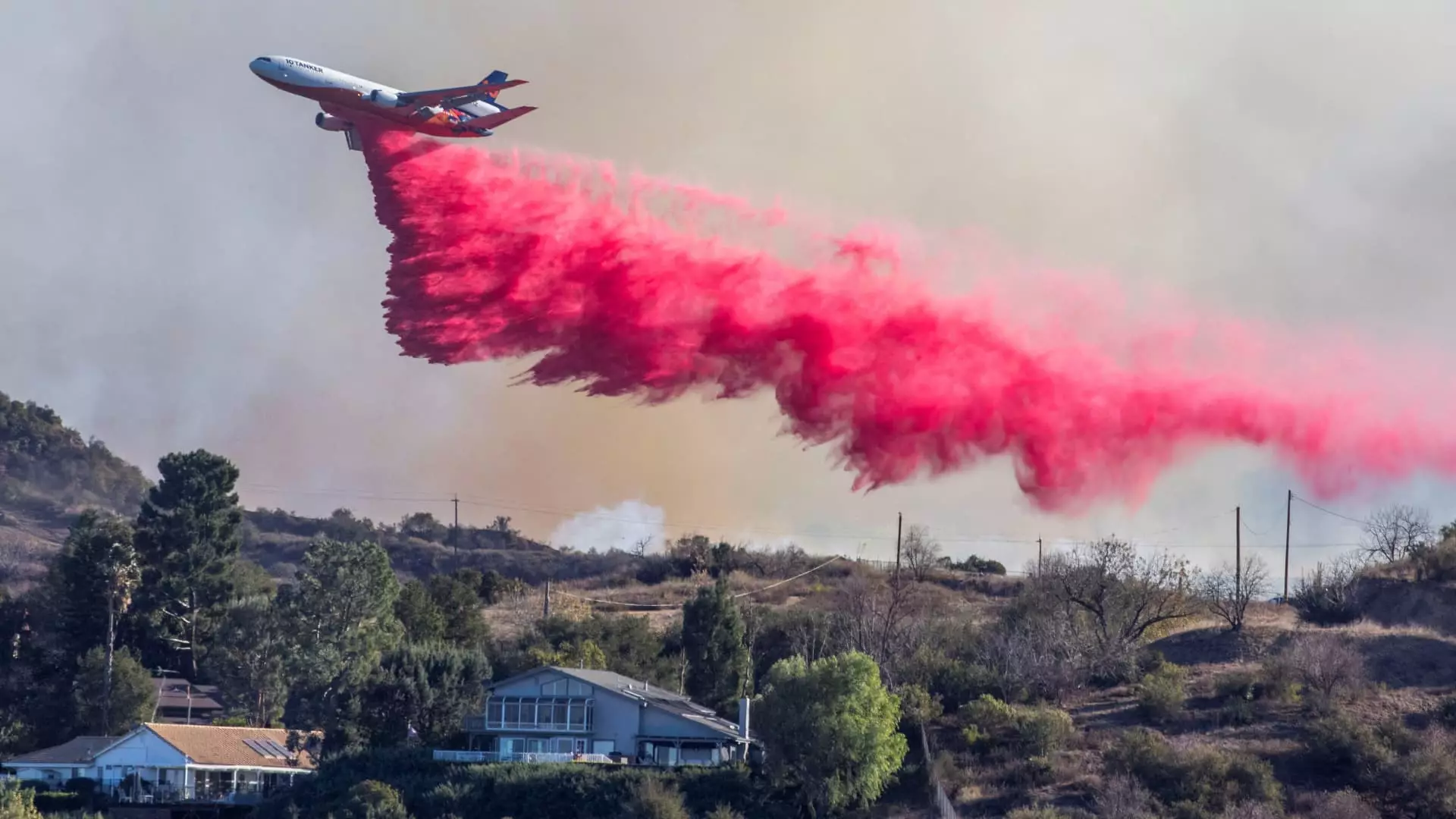The threats posed by wildfires have reached unprecedented levels, especially in regions like Los Angeles, where recent infernos have devastated communities, leading to loss of homes, property, and lives. As the frequency and severity of these wildfires continue to rise—largely fueled by climate change—it has become glaringly evident that existing firefighting resources are often insufficient. According to the United Nations Environment Program, the 21st century is expected to experience more pronounced wildfire incidents, a claim substantiated by statistics from the United States Environmental Protection Agency (EPA), which reveals a worrying upward trend in wildfire destruction over the past two decades. The demand for effective firefighting solutions is clear, and the aviation sector is stepping up to address this urgent need.
Air tankers and water bombers serve as essential tools in the fight against wildfires, providing much-needed support to ground firefighters who often struggle against rapidly spreading flames and unpredictable weather conditions. Private companies like 10 Tanker Air Carrier and Bridger Aerospace have adapted large aircraft for this purpose, transforming them into powerful firefighting machines capable of deploying thousands of gallons of fire retardants and water on hard-to-reach blazes. Joel Kerley, CEO of 10 Tanker, notes the critical nature of aerial firefighting, particularly during complex fire incidents fueled by extreme winds, which can amplify the catastrophic effects of wildfires.
Despite being in the off-season, as observed earlier this year, the sudden resurgence of intense wildfires in California demonstrated a clear need for rapid response capabilities that can operate year-round. The growing unpredictability of fire behavior lends urgency to the requirement for a robust aerial firefighting presence. Without sufficient air tankers available at critical moments, the battle against raging infernos becomes significantly more daunting.
While the U.S. Forest Service manages an extensive fleet of firefighting aircraft, private companies are increasingly becoming integral partners in tackling wildfires due to the growing inadequacy of resources. As Joel Kerley from 10 Tanker points out, the reality is there are “not enough air tankers to go around” during peak fire seasons. The shift towards year-round fire management has compelled nations worldwide, particularly those prone to wildfires like Australia, to invest in their own fleets of firefighting aircraft. However, building these fleets is a time-consuming and complex endeavor, further complicating the firefighting landscape.
The maintenance demands placed on existing aerial fleets can also limit immediate availability. Aircraft must undergo extensive modifications to be adapted for firefighting, a process taking years and necessitating substantial financial investments. As Kevin McCullough of Aero Air explains, the refurbishment of traditional jets into air tankers is no simple task—the transformation is extensive, requiring about 18 months of work. These logistical hurdles can hinder a prompt response when disasters strike.
As climate-related changes continue to drive the intensity and spread of wildfires, the need for advanced firefighting aircraft has surged. Recent developments in aerial firefighting technology, including the newest models of water scoopers, highlight the potential for improving fire management strategies. Companies like De Havilland are actively developing next-generation aircraft designed to enhance operational efficiency—features such as improved cockpit conditions and water-drop precision aim to bolster firefighting effectiveness in high-pressure scenarios.
The burgeoning demand for new firefighting aircraft is accompanied by the realization that existing fleets are aging, which raises concerns over their performance as they encounter increasingly severe operational conditions. Industry experts suggest that the combination of climate change and older aircraft may result in even greater demands on firefighting resources in the future, compelling private firms and governments to rethink strategies and invest in modern fleets.
The dilemma of combatting wildfires has underscored the limitations of current firefighting resources, demanding a collective approach that combines government oversight with private sector innovation. As wildfires become an enduring threat, the evolution of aerial firefighting capabilities will be crucial in mitigating the devastating impacts on communities and ecosystems. Policymakers and industry stakeholders must prioritize investments in new technology and expand existing fleets to ensure readiness for the unpredictable challenges that lie ahead. The proactive steps taken today will shape the resilience of firefighting efforts in the era of climate change.


Leave a Reply